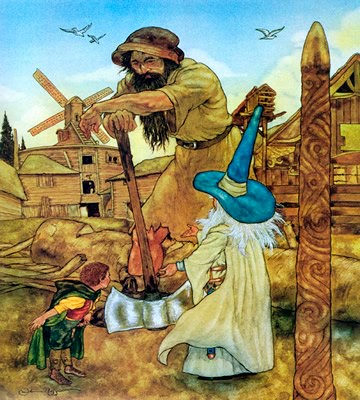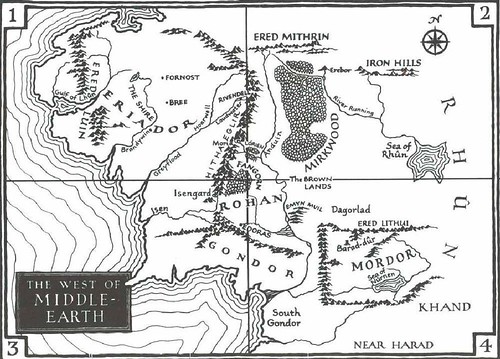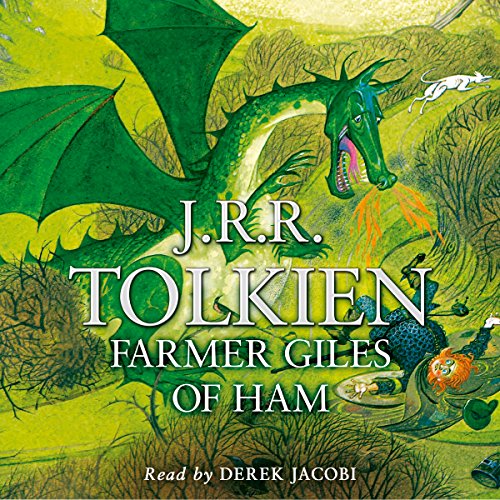In which we are introduced to a rather alarming character named Beorn.
The name Beorn is actually an Old English word for “man” or “warrior” but it originally meant “bear.” Beorn, the next helper that Bilbo and the dwarves find, is a man/bear. Gandalf calls hims a “skin-changer.”
“At any rate he is under no enchantment but his own. He lives in an oak-wood and has a great wooden house; and as a man he keeps cattle and horses which are nearly as marvellous as himself. They work for him and talk to him. He does not eat them; neither does he hunt or eat wild animals. He keeps hives and hives of great fierce bees, and lives most on cream and honey. As a bear he ranges far and wide. I once saw him sitting all alone on the top of the Carrock at night watching the moon sinking towards the Misty Mountains, and I heard him growl in the tongue of bears: ‘The day will come when they will perish and I shall go back!’ That is why I believe he once came from the mountains himself.”

Shapeshifting, according to Wikipedia, is a common theme in folk tales and mythology. Sometimes voluntary (as with Beorn) and at other times inflicted upon an unwilling subject by a sorcerer or god (Beauty and the Beast), shapeshifting from man, or woman, to animal gives the shifter both new abilities and new limitations. With Beorn, the advantages of being a bear are emphasized: he can travel far and rapidly in his bear-shape and defeat powerful enemies like the Wargs and the goblins. Gandalf seems to think that the visit to Beorn’s house is both perilous and necessary. Z-baby says that Beorn is a “creepy” character. She said, “What if he got mad and decided to turn into a bear and eat them?” I guess that’s the danger you run when you’re dealing with a bear-man.
Beorn can and does help the dwarves and Bilbo, but he can also be a bad enemy if he is annoyed or crossed.
“A goblin’s head was nailed to a tree just outside the ate and a warg-skin was nailed to a tree just beyond. Beorn was a fierce enemy. But now he was their friend, and Gandalf thought it wise to tell him their whole story and the reason of their journey, so that they could get the most help he could offer.”
At the end of this chapter, Gandalf goes off to other business, leaving the dwarves and Bilbo to enter the forest of Mirkwood by themselves. As he is leaving, Gandalf mentions, in an off-hand way, the Necromancer, an early incarnation of Sauron, the powerful satanic villain of The Lord of the Rings. The enemy that Bilbo and his companions have to deal with, eventually, in The Hobbit is the dragon Smaug, but first they must face the perils of Mirkwood.



